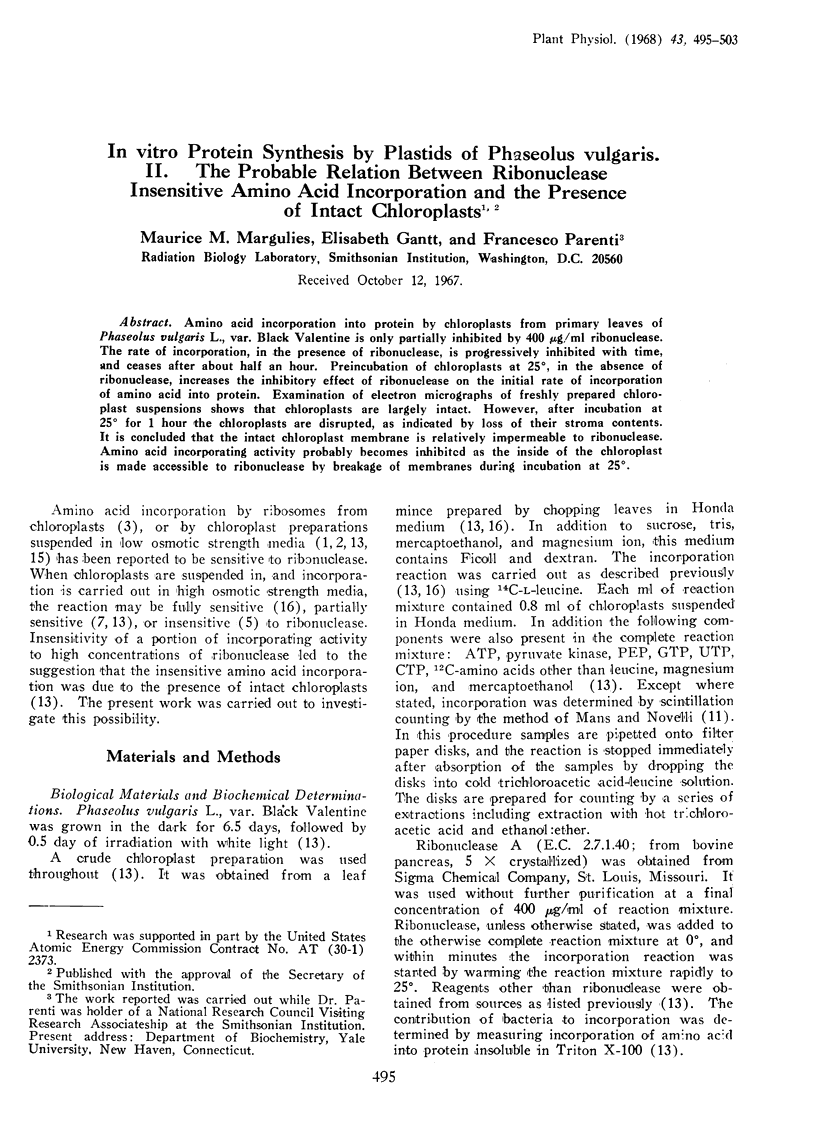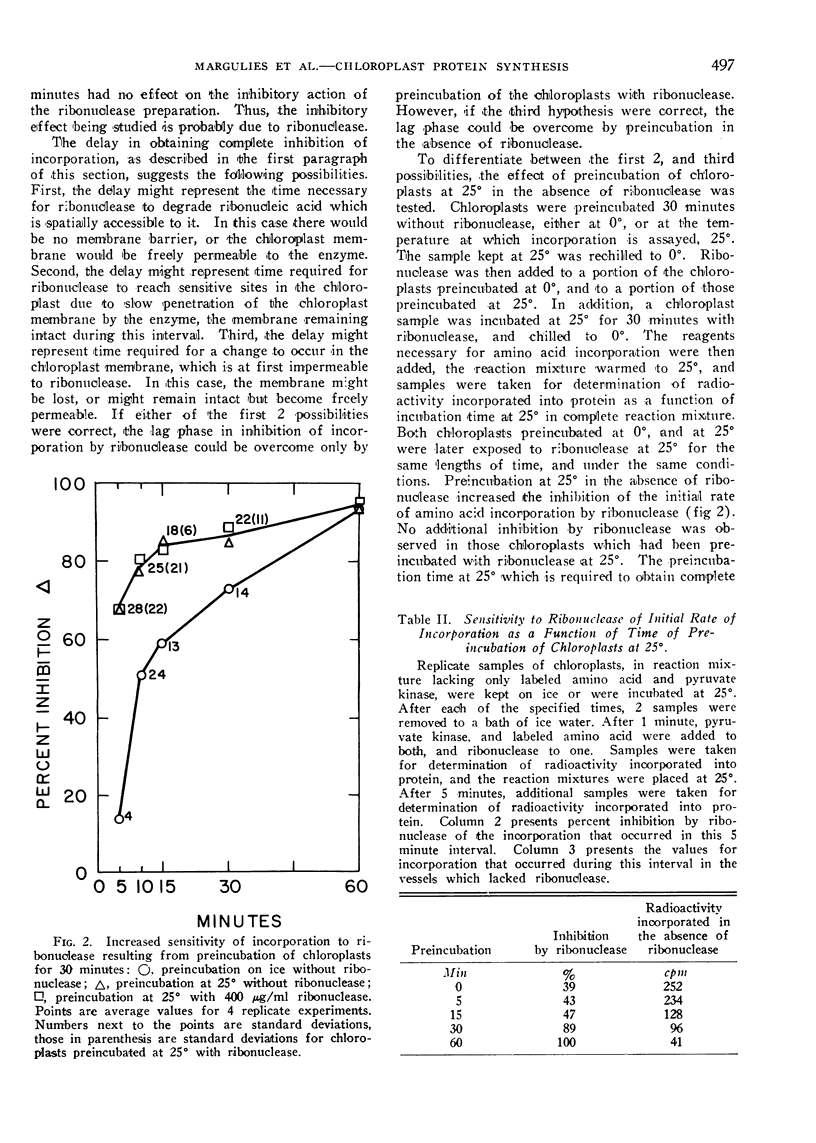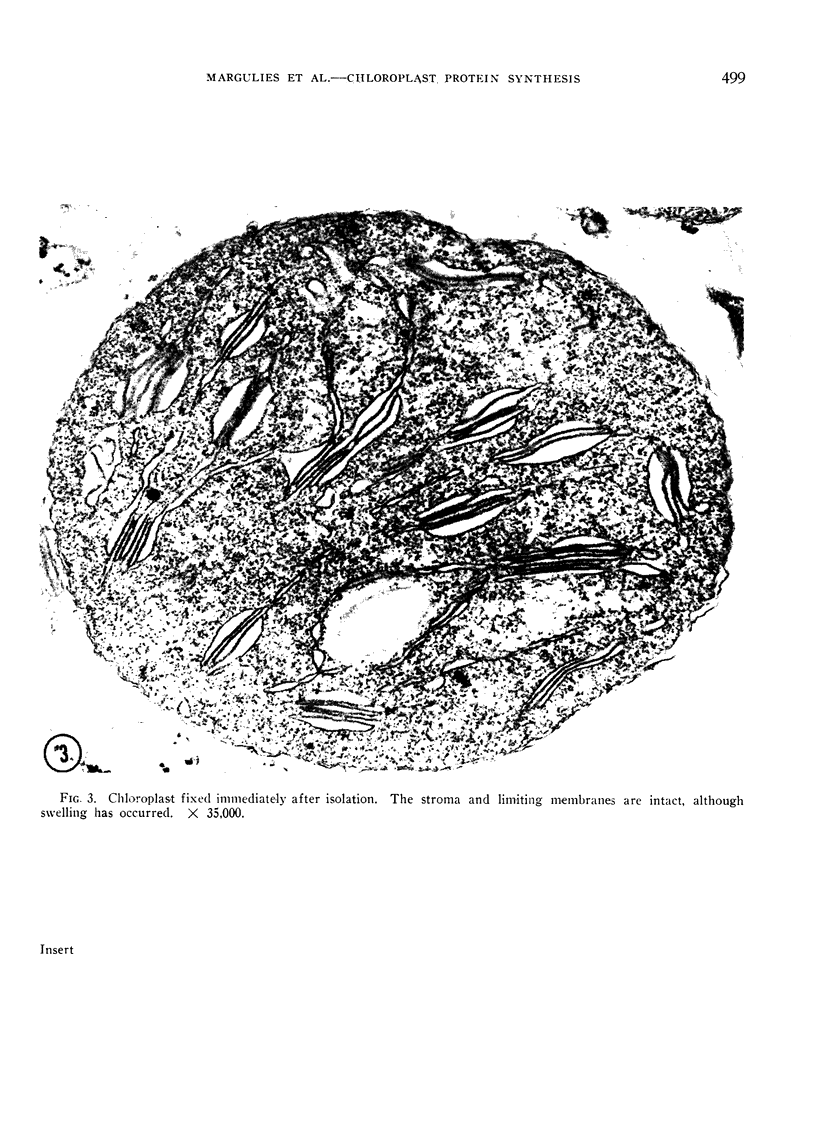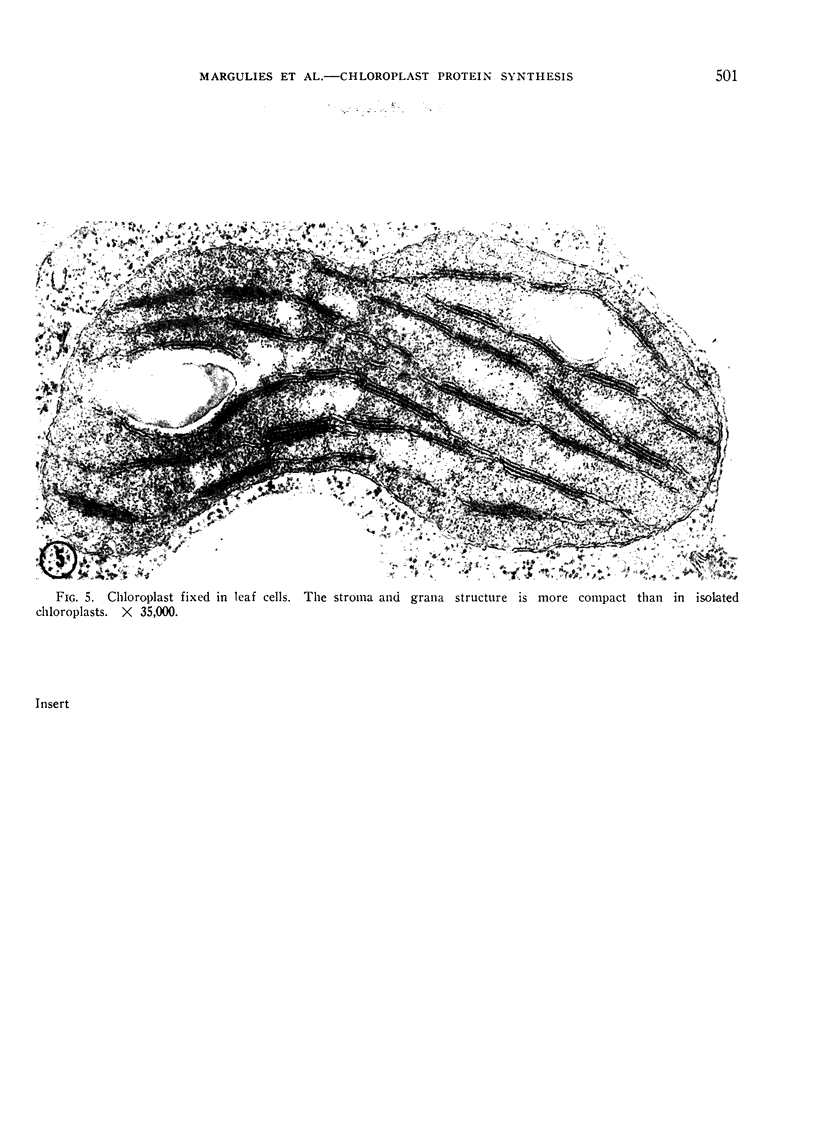Abstract
Amino acid incorporation into protein by chloroplasts from primary leaves of Phaseolus vulgaris L., var. Black Valentine is only partially inhibited by 400 μg/ml ribonuclease. The rate of incorporation, in the presence of ribonuclease, is progressively inhibited with time, and ceases after about half an hour. Preincubation of chloroplasts at 25°, in the absence of ribonuclease, increases the inhibitory effect of ribonuclease on the initial rate of incorporation of amino acid into protein. Examination of electron micrographs of freshly prepared chloroplast suspensions shows that chloroplasts are largely intact. However, after incubation at 25° for 1 hour the chloroplasts are disrupted, as indicated by loss of their stroma contents. It is concluded that the intact chloroplast membrane is relatively impermeable to ribonuclease. Amino acid incorporating activity probably becomes inhibited as the inside of the chloroplast is made accessible to ribonuclease by breakage of membranes during incubation at 25°.
Full text
PDF







Images in this article
Selected References
These references are in PubMed. This may not be the complete list of references from this article.
- GOFFEAU A., BRACHET J. DEOXYRIBONUCLEIC ACID-DEPENDENT INCORPORATION OF AMINO ACIDS INTO THE PROTEINS OF CHLOROPLASTS ISOLATED FROM ANUCLEATE ACETABULARIA FRAGMENTS. Biochim Biophys Acta. 1965 Feb 8;95:302–313. doi: 10.1016/0005-2787(65)90494-6. [DOI] [PubMed] [Google Scholar]
- Gantt E., Conti S. F. The ultrastructure of Porphyridium cruentum. J Cell Biol. 1965 Aug;26(2):365–381. doi: 10.1083/jcb.26.2.365. [DOI] [PMC free article] [PubMed] [Google Scholar]
- Haldar D., Freeman K. B., Work T. S. The site of synthesis of mitochondrial proteins in Krebs II ascites-tumour cells. Biochem J. 1967 Mar;102(3):684–690. doi: 10.1042/bj1020684. [DOI] [PMC free article] [PubMed] [Google Scholar]
- Hall T. C., Cocking E. C. Amino acid incorporation into protein by aseptic cell-free systems from tomato cotyledons and leaves. Biochim Biophys Acta. 1966 Jul 20;123(1):163–171. doi: 10.1016/0005-2787(66)90169-9. [DOI] [PubMed] [Google Scholar]
- LUFT J. H. Improvements in epoxy resin embedding methods. J Biophys Biochem Cytol. 1961 Feb;9:409–414. doi: 10.1083/jcb.9.2.409. [DOI] [PMC free article] [PubMed] [Google Scholar]
- McCarty R. E., Jagendorf A. T. Chloroplast damage due to enzymatic hydrolysis of endogenous lipids. Plant Physiol. 1965 Jul;40(4):725–735. doi: 10.1104/pp.40.4.725. [DOI] [PMC free article] [PubMed] [Google Scholar]
- Parenti F., Margulies M. M. In Vitro Protein Synthesis by Plastids of Phaseolus vulgaris. I. Localization of Activity in the Chloroplasts of a Chloroplast Containing Fraction from Developing Leaves. Plant Physiol. 1967 Sep;42(9):1179–1186. doi: 10.1104/pp.42.9.1179. [DOI] [PMC free article] [PubMed] [Google Scholar]
- ROODYN D. B., REIS P. J., WORK T. S. Protein synthesis in mitochondria. Requirements for the incorporation of radioactive amino acids into mitochondrial protein. Biochem J. 1961 Jul;80:9–21. doi: 10.1042/bj0800009. [DOI] [PMC free article] [PubMed] [Google Scholar]
- SPENCER D., WILDMAN S. G. THE INCORPORATION OF AMINO ACIDS INTO PROTEIN BY CELL-FREE EXTRACTS FROM TOBACCO LEAVES. Biochemistry. 1964 Jul;3:954–959. doi: 10.1021/bi00895a019. [DOI] [PubMed] [Google Scholar]
- Spencer D. Protein synthesis by isolated spinach chloroplasts. Arch Biochem Biophys. 1965 Aug;111(2):381–390. doi: 10.1016/0003-9861(65)90200-6. [DOI] [PubMed] [Google Scholar]
- Walker D. A. Correlation between Photosynthetic Activity and Membrane Integrity in Isolated Pea Chloroplasts. Plant Physiol. 1965 Nov;40(6):1157–1161. doi: 10.1104/pp.40.6.1157. [DOI] [PMC free article] [PubMed] [Google Scholar]





